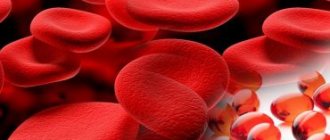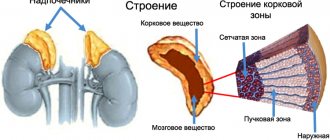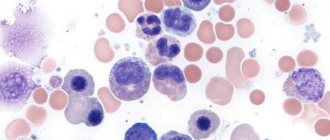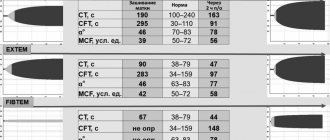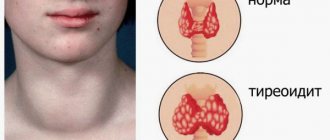B12 anemia or, as it is also called pernicious/megaloblastic, is a pathological condition that is characterized by a disruption in the formation and maturation of blood cells due to a deficiency of vitamin B12 in the body. The latter may be due to its insufficient intake into the human body or problems with absorption. Most often, the disease is diagnosed in patients over the age of fifty of both sexes. According to medical statistics, its prevalence does not exceed 1%, while at least 10% of patients over the age of seventy suffer from B12 deficiency.
The Department of Hematology at CELT offers diagnosis and treatment of B12 deficiency anemia in Moscow. Our multidisciplinary clinic was one of the first in our country to begin offering paid medical services and has been successfully operating for the third decade. Its staff includes leading Russian specialists, who have modern technologies and a diagnostic and treatment base in their arsenal. It allows you to accurately and quickly diagnose and carry out treatment according to international standards. You can find out the cost of services in our price list; check the numbers with our information line operators.
B12 anemia: causes
The daily requirement of the human body for vitamin B12 is from one to five micrograms. It is satisfied through its consumption with food: after entering the stomach, the vitamin is separated from protein under the influence of enzymes. In order for the body to fully absorb it, a process of connection with glycoprotein and other factors must occur. Absorption of the vitamin into the blood occurs in the lower part of the ileum, from where it passes to the tissues. Factors that can initiate the development of anemia are divided into two groups:
- Nutritional – an unbalanced diet that is unable to ensure the required amount of B12 enters the body. This often happens if the patient practices fasting, vegetarianism, or diets that minimize or eliminate the consumption of animal protein;
- Endogenous – disruptions in the process of vitamin absorption due to a deficiency of protein that binds the vitamin and converts it into an absorbable form. A similar phenomenon can be initiated by: a congenital absence of the internal Castle factor;
- inflammatory processes of the gastric mucosa in a chronic form;
- condition after gastric excision surgery;
- condition after partial removal of the ileum or duodenum;
- inflammation of the small intestine (enteritis), pancreas (pancreatitis);
- gluten enteropathy;
- granulomatous inflammation of the digestive tract (Crohn's disease);
- protrusions of the intestinal wall - (diverticula);
- neoplasms of the jejunum of a malignant nature;
- helminthic infestations caused by different types of helminths.
The reasons may lie in physical and mental dependence on alcohol intake, in the use of Colchicine, Neomycin, as well as a number of oral contraceptives.
Symptoms of vitamin B12 deficiency
It is easier to prevent anemia than to treat and restore the body from the damage caused. Symptoms of cobalamin deficiency are easy to detect in yourself or loved ones:
- Against the background of a decrease in hemoglobin and an increase in bilirubin, the skin turns pale and yellowish.
- The heartbeat quickens, stabbing pain in the chest area due to overload is possible.
- Dizziness due to insufficient oxygen supply to the brain.
- Memory impairment, decreased mental abilities.
- Shortness of breath after minor physical exertion.
- Decreased visual acuity, blurred objects, “goosebumps” before the eyes.
- Digestive system disorders: heartburn, increased gas formation, diarrhea, distortion of taste.
- Stomatitis, it says, the tongue is raspberry colored.
- Nervous system disorders: muscle weakness, numbness or tingling of the extremities, impaired coordination of movements, insomnia, convulsions.
It is important to understand that long-term B12 deficiency leads to irreversible neurological changes. Timely identification and elimination of the deficiency normalizes the condition in 1.5-2 months.
B12 anemia: symptoms
The clinical picture of megaloblastic anemia is determined by the severity of four syndromes:
| Syndrome | Clinical manifestations |
| Anemic | Symptoms of B12 deficiency anemia are nonspecific because they arise due to failures in the transport of oxygen by red blood cells. They are:
In the long term, anemia can develop into secondary myocardial damage and heart failure. |
| Gastroenterological | One of the classic clinical manifestations is the so-called “lacquered” raspberry tongue. The rest are as follows:
Diagnosis of B12-deficiency anemia reveals atrophy of the gastric mucosa and decreased secretion production. |
| Neurological | The symptoms of this group are caused by damage to neurons and pathways, which manifests itself:
Neurological examination reveals damage to the peripheral nerves and spinal cord. |
The lack of adequate treatment can cause the development of complications in the form of anemia and degenerative processes of the nerves due to the increased sensitivity of the bone marrow and tissues of the nervous system to the lack of B12 in the body.
Types of anemia
Iron-deficiency anemia
IDA is a syndrome in which the supply of iron in the body is reduced and the synthesis of iron-containing proteins is disrupted. This type of anemia is very common and occurs in both adults and children. Manifested by a decrease in hemoglobin concentration and trophic disorders in tissues. The brain especially suffers from lack of oxygen.
Symptoms in the initial stages should never be ignored!
If suddenly the following symptoms appear for some time, then this is a serious reason to consult a general practitioner:
- constant weakness
- decreased performance
- increased fatigue
- pale dry skin
At first glance, completely harmless symptoms can lead to the development of a serious illness and cause significant damage.
The norm for an adult is up to 5 g of iron.
The state of iron deficiency is provoked by the following conditions:
- chronic and acute blood loss
- diets and fasting
- gastrointestinal diseases
- pregnancy, lactation
- physical activity, sports
If you do not seek help from specialists, then over time the symptoms expand:
- the skin becomes pale with a greenish tint, becomes flabby, dry; hair becomes dry, brittle, quickly turns gray, and begins to fall out;
- nail plates become thin, flat, and can take on a concave shape;
- A characteristic symptom only for IDA is muscle weakness!
Diagnosis of iron deficiency
A complete laboratory diagnosis is required:
- blood test (general and biochemical),
- consultation with a specialist: gynecologist, urologist, proctologist, hematologist
- You may even need a bone marrow puncture.
After diagnostic measures, the therapist prescribes an individual treatment regimen, which is carried out for a long time with iron supplements. Therapeutic dosages are prescribed until hemoglobin levels normalize, then the patient is transferred to prophylactic doses.
Modern studies have shown that following a diet with mild IDA can normalize blood counts and avoid taking iron supplements. You should include foods high in protein and iron in your diet: liver, beef tongue, veal, turkey, red sea fish, eggs, buckwheat, peaches, persimmons, apples. Dairy products and tea should be excluded, because they interfere with iron absorption.
Pay attention to your health, contact experienced specialists, because a correct diagnosis is the key to successful treatment of the disease! Take care of yourself and be healthy!
B12 anemia: diagnosis
Before starting treatment, CELT hematologists prescribe comprehensive studies to the patient, which allow them to accurately diagnose “B12-deficiency anemia” and identify the causes of its development. In addition to the hematologist, specialists in neurology and gastroenterology take part in the process. Diagnostics is as follows:
- Vitamin deficiency is detected through biochemical analysis;
- A general analysis determines the deficiency of red blood cells, leukocytes and platelets;
- Stool analysis can detect excess fat content, helminth fragments;
- The Schilling test detects failures in vitamin absorption;
- Bone marrow histology and myelogram indicate an increase in the number of megaloblasts.
In order to identify the triggering factors for malabsorption of vitamin B12 deficiency anemia in the gastrointestinal tract, the patient is prescribed gastroscopy and radiography of the stomach, as well as examination of the large intestine using an x-ray contrast agent. Other instrumental methods will also help you obtain the necessary information:
- Ultrasound scanning of the abdominal organs;
- magnetic resonance imaging of the brain;
- encephalography.
Reasons for a critical decrease in cobalamin
B12 deficiency anemia occurs when there is insufficient intake of animal protein into the body and in cases where cobalamin is not absorbed and does not enter the blood.
In the first case, people most often suffer who limit themselves in nutrition - losing weight, vegetarians, adherents of methods with an unbalanced diet. B12 is found in meat, beef liver, dairy products, and egg yolks.
The second, endogenous cause requires diagnosis. The absorption of cobalamin is ensured by the enzyme Castle factor. When the synthesis of intrinsic factor Castle decreases or stops, the vitamin that enters the body is not absorbed.
Absorption into the bloodstream is prevented by diseases of the gastrointestinal tract:
- atrophic gastritis,
- chronic pancreatitis,
- Crohn's disease,
- diverticula of the small intestine,
- tumors.
In some hormonal diseases, including hyperthyroidism, B12 consumption increases several times. At the same time, the body experiences a shortage of it even with normal intake and without problems of absorption.
In some cases, the cause of deficiency is helminths and bacteria, taking certain medications and oral contraceptives, and alcoholism. Even frequent intestinal upset can interfere with the absorption of the substance.
B12 anemia: treatment
Treatment tactics for B12-deficiency anemia are developed by CELT specialists according to diagnostic results and individual patient indications. If the diagnosis is confirmed, treatment will be carried out for life, and every five years an endoscopic examination of the gastric mucosa will be required, eliminating the risk of developing malignant neoplasms.
In order to compensate for the deficiency of the vitamin, the patient is prescribed intramuscular administration. Treatment of diseases and disorders that initiated the development of anemia is carried out:
- elimination of helminths;
- taking digestive enzymes;
- operations for diverticula and malignant tumors;
- food with a high content of animal protein;
- taking glucocorticoids for disorders of the production of internal factor.
If you start treating anemia in a timely manner, your blood counts will return to normal in one and a half to two months. Neurological symptoms persist for up to six months; if treatment was started at an advanced stage, they are irreversible and cannot be cured.
The Department of Hematology at CELT welcomes candidates, doctors and professors of medical sciences with over twenty-five years of practical and scientific experience. You can make an appointment with them online or by contacting our operators. No less experienced and qualified specialists perform septoplasty in the otolaryngology department.
At CELT you can consult a hematologist.
- Initial consultation – 3,500
- Repeated consultation – 2,300
Make an appointment
By making an appointment with a hematologist, you can get a comprehensive consultation. The doctor is competent to treat various blood diseases, most of which can be identified in the early stages and prescribe timely treatment to cope with the disease quickly and easily.
Publications in the media
Anemia of this group develops due to vitamin B12 deficiency (daily requirement 1–5 mcg). Pernicious anemia is an autoimmune disease with the formation of antibodies to gastric parietal cells or intrinsic Castle factor. In most cases it is combined with fundic gastritis and achlorhydria. There are also B12-deficiency anemias of nutritional origin. Pernicious anemia can be congenital or acquired. The predominant age is over 60 years.
Etiology • Pernicious anemia •• Fundal gastritis (type A) ••• AT to gastric parietal cells ••• Immune disorders (production of AT to intrinsic Castle factor) • Other B12-deficiency anemia •• Vegetarian diet without additional vitamin B12 intake •• Gastrectomy •• Afferent loop syndrome •• Broad tapeworm infestation •• Malabsorption syndrome •• Chronic pancreatitis •• Chronic alcoholism •• Drugs (biguanides, phenylbutazone, aminosalicylic acid, oral contraceptives).
Genetic aspects. There are a number of genetically heterogeneous forms of pernicious anemia • Classic adult pernicious anemia (170900, presumably Â) with impaired absorption of vitamin B12 • Pernicious anemia in adolescents with polyglandular autoimmune syndrome (*240300, 21q22.3, r) • Juvenile pernicious anemia with relative malabsorption vitamin B12 and proteinuria (*261100, Immurslund–Grasbeck syndrome, 10p12.1, MGA1, r). With this megaloblastic anemia, malformations of the urinary tract and proteinuria are possible • Congenital pernicious anemia (*261000, chronicle 11, GIF, r gene mutation) due to the lack of gastromucoprotein secretion with normal gastric acidity and mucosal morphology. Expression of HLA-DR2, HLA-DR4 is characteristic.
Pathomorphology • Bone marrow - megaloblastic type of hematopoiesis, increased iron content, hypersegmented neutrophils • Stomach - fundal gastritis, goblet cell hypertrophy, parietal cell atrophy, chief cell atrophy, characterized by cellular atypism • Spinal cord - myelin degeneration of the posterior and lateral columns, degenerative changes in the ganglia dorsal roots (funicular myelosis) • Degeneration of peripheral nerves.
The clinical picture is determined by vitamin B12 deficiency • General signs of anemia (weakness, shortness of breath, tachycardia, pallor, tinnitus, etc.) • Funicular myelosis (paresthesia, decreased vibration sensitivity, muscle atrophy, polyneuritis, pathological reflexes) • Impaired coordination (positive test Romberg and finger-nose test) • Mental disorders (confusion, depression, dementia) • From the gastrointestinal tract - atrophic glossitis (raspberry “varnished” tongue), hepatosplenomegaly, anorexia • Skin - hyperpigmentation, purpura, vitiligo.
Age characteristics • Juvenile pernicious anemia often occurs in adolescents and is generally similar to anemia in adults • Congenital pernicious anemia usually appears before age 3 • In the elderly, pernicious anemia occurs most often in combination with other autoimmune disorders, depression and dementia.
Concomitant pathology • Autoimmune diseases (rheumatoid arthritis, Graves' disease, hypothyroidism, hypoparathyroidism, Hashimoto's thyroiditis, diabetes) • Idiopathic adrenal insufficiency • IDA • Agammaglobulinemia • Tropical sprue • Crohn's disease • Infiltrative diseases of the ileum and small intestine.
Laboratory tests • Pancytopenia (anemia, leukopenia, thrombocytopenia) • Peripheral blood smear: macrocytosis (mean erythrocyte volume >115 µm3), elliptocytosis, anisocytosis, poikilocytosis; Howell-Jolly bodies (spherical or ovoid eccentrically located granules; found in circulating red blood cells, more often and in greater numbers after splenectomy) and Cabot rings, hypersegmented neutrophils, reticulocyte count normal or slightly reduced • Plasma vitamin B12 concentration <100 pg/ml (normally 160–950 pg/ml) • Increased serum ferritin concentration • Achlorhydria • Hypergastrinemia • When stimulated by pentagastrin, gastric juice pH >6 • AT to intrinsic factor of Castle • AT to parietal cells • Hyperbilirubinemia due to direct fraction • Decreased content haptoglobin • Increased LDH activity.
Conditions affecting the results of studies • A false increase in the average erythrocyte volume is caused by the following factors: •• cold agglutinins •• hyperglycemia •• severe leukocytosis • A false normal level of vitamin B12 in the blood plasma is caused by the following conditions: •• myeloproliferative diseases •• liver diseases • False a decrease in the level of B12 in the blood plasma is detected in the presence of the following factors: •• multiple myeloma •• taking oral contraceptives •• pregnancy •• folic acid deficiency •• transcobalamin II deficiency. Special tests • Schilling test - decreased absorption of vitamin B12 • Bone marrow puncture.
TREATMENT
Management tactics • For pernicious anemia, treatment must be carried out for life • Outpatient regimen • Monthly administration of cyanocobalamin • Endoscopic examination every 5 years to exclude stomach cancer or as indicated • Diet with a high protein content.
Drug therapy. Cyanocobalamin - 100 mcg subcutaneously daily for 1 week, then 1 time per week for 1 month and then 1 time per month for life.
A complication of treatment is hypokalemia (may appear in the 1st week of treatment).
The course and prognosis are favorable with timely and adequate treatment with the vitamin cyanocobalamin. Signs of central nervous system damage may persist if the patient’s treatment was started 6 months or more from the onset of the disease.
Synonyms • Pernicious anemia • Addison–Biermer disease • Biermer disease
ICD-10 • D51 Vitamin B12 deficiency anemia
Treatment
To get the right treatment, you need to contact a specialist who will conduct a series of studies, identify the causes, symptoms and other manifestations of the disease.
- If the disease is caused by helminths, then specialized drugs are used according to a special scheme.
- For gastrointestinal disorders, enzymes are prescribed. To restore the flora of the gastrointestinal tract, dietary nutrition is selected, and enzymes are also taken.
- During pathogenetic treatment, vitamin B12 is administered. The treatment regimen is to replenish the body's supply of the missing vitamin, adhere to supportive therapy, and also reduce the risk of anemia.
Prevention lies in proper nutrition. If a person adheres to a vegetarian diet, then it is worth increasing the consumption of soy products and dairy products. And also take regular courses of vitamin B12.
ONLINE REGISTRATION at the DIANA clinic
You can sign up by calling the toll-free phone number 8-800-707-15-60 or filling out the contact form. In this case, we will contact you ourselves.
Symptoms and signs of B12 deficiency anemia
Insufficient oxygen supply to cells is manifested by rapid fatigue, weakness, dizziness and fainting, ringing in the ears, pale skin and mucous membranes. Shortness of breath and palpitations may occur. Appetite worsens and weight decreases. All these are common symptoms characteristic of any anemia. B12 deficiency anemia may additionally manifest itself:
- slight jaundiced skin tone;
- inflammation of the tongue (glossitis);
- mouth ulcers;
- parasthesia - a sensitivity disorder in which there is numbness of the limbs, a tingling feeling;
- irritability;
- depression;
- decreased efficiency of the thought process;
- memory impairments.
Some of these symptoms may occur with vitamin B12 deficiency without anemia.

